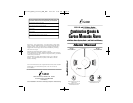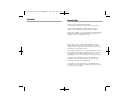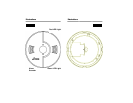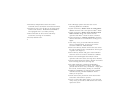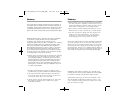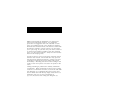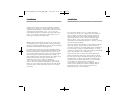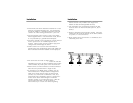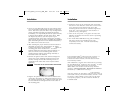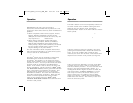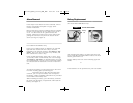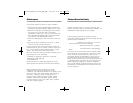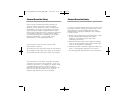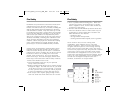
Locations To Avoid
WARNING: Do not install in garages, kitchens, furnace
rooms or bathrooms! Install at least 1.5 m (5’) away
from any fuel burning appliance.
Do not install within 0.9 m (3’) of the following:
The door to a kitchen, or a bathroom that contains a
tub or shower, forced air ducts used for heating or
cooling, ceiling or whole house ventilating fans, or
other high air flow areas. Avoid excessively dusty,
dirty or greasy areas. Dust, grease or household
chemicals can contaminate the alarm’s sensors, causing
it to not operate properly.
Place the alarm where drapes or other objects will not
block the sensor. Smoke and CO must be able to
reach the sensors to accurately detect these conditions.
Do not install in peaks of vaulted ceilings, “A” frame
ceilings or gabled roofs. Keep out of damp and humid
areas. Do not place near a diaper pail.
Install at least 30.5 cm (12”) away from fluorescent
lights as electronic noise may cause nuisance alarms.
Do not place in direct sunlight and keep out of insect
infested areas. Extreme temperatures will effect the
sensitivity of the Smoke/CO Alarm. Do not install in
areas where the temperature is colder than
4.4°C (40°F) or hotter than 37.8°C (100°F). Do not
install in areas where the relative humidity (RH) is
greater than 85%. Place away from doors and
windows that open to the outside.
Sloped Ceilings
Install Smoke Alarms on sloped, peaked or cathedral
ceilings at, or within 0.9 m (3’) of the highest point
(measured horizontally). Smoke alarms in rooms with
ceiling slopes greater than 0.3 m - 2.4 m (1’ to 8’)
horizontally should be located on the high side of the
room. Do not place the alarm in the peak of an “A”
frame type ceiling (see Diagram B).
Mobile Homes
Mobile homes built within the last five to seven years
are designed to be energy efficient. Install Smoke/CO
alarms as recommended above (refer to Recommended
Installation Instructions and Diagram A).
In mobile homes that are not well insulated, extreme
heat or cold can be transferred from the outside to the
inside through poorly insulated walls and roof. This
may cause a thermal barrier, which can prevent smoke
from reaching an alarm mounted on the ceiling. In
such mobile homes, install the Smoke/CO Alarm on an
inside wall with the top edge of the alarm at a
minimum of 10 cm (4”) and a maximum of
30.5 cm (12”) below the ceiling (see Diagram A). If
you are not sure about the insulation in your mobile
home, or if you notice that the outer walls and ceiling
are either hot or cold, install the alarm on an inside
wall only!
I n s t a l l a t i o n
I n s t a l l a t i o n
1110
810-1692_RevD_119-133_MAN_ENG 10/7/03 4:41 PM Page 10



